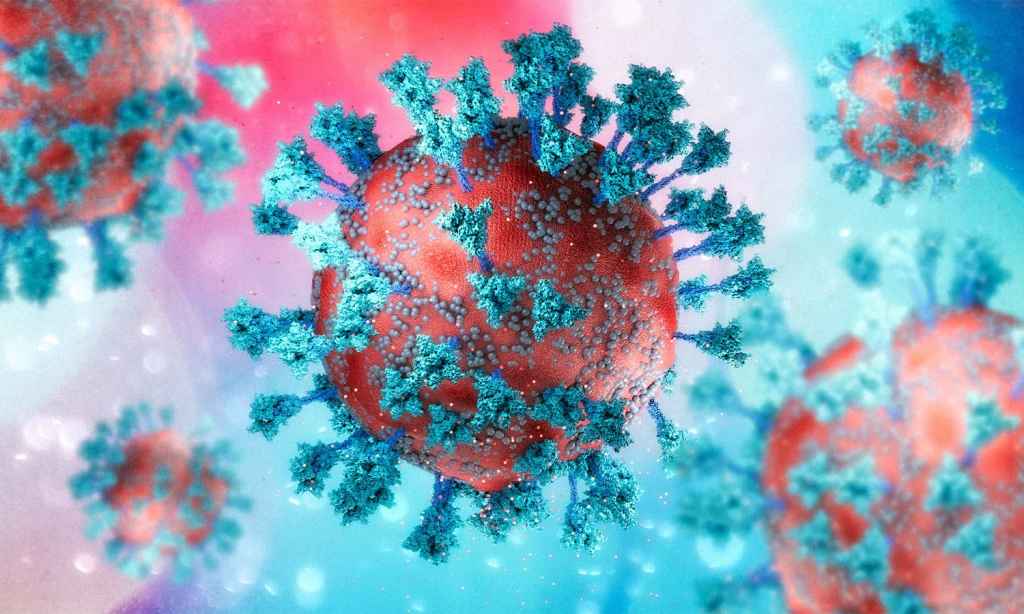The first case of the ‘Deltacron’ version of COVID-19 has been detected in Australia.
Experts are saying there is however no reason to believe it will be able to evade vaccines or cause more serious illness.
Threats of this new and emerging strain of COVID-19 have been circulating for the last few weeks after genetic sequencing of the variant was undertaken at the Institut Pasteur in Paris.
The variant seems to contain portions of the genetic code of both the Omicron and Delta strains of the virus, hence the name ‘Deltacron’.
This is perhaps unhelpful since Deltacron appears to be a broad nickname for a number of different variants that contain genetic similarities to both Delta and Omicron, including the BA.2 strain of Omicron which is thought to be behind the rise in cases in Australia and across the world.
The merging of different viral strains is not new, even for COVID. There are currently hundreds of genetically distinct strains of the SARS-COV-2 virus that are being monitored by global health groups in collaboration with the World Health Organisation.
While the name would suggest that the strain contains characteristics of both Delta and Omicron, the real fear is a strain that has the severity of Delta with the transmissibility of Omicron. That worry has been keeping scientists up at night for some time however a virus-like that has not yet been identified, though that doesn’t mean it won’t.
Here’s what you need to know about the Deltacron family of COVID strains.
What Is Deltacron?
The BA.2 strain, which has erroneously been termed both ‘Stealth Omicron‘ and ‘Deltacron’, was first identified in South Africa in November. Omicron has the name BA.1 and it has several sub-lineage variants known as BA.2 – ‘Stealth Omicron’ – and BA.3 but these aren’t what you might think of as true Deltacron strain since they don’t have genetic material from Delta.
Viruses that contain genetic parts of different strains are called ‘recombinants’ and the strain that actually does appear to be a hybrid of both Delta and Omicron is the one that was found by the Instit Pasteur in Paris.
GISAID, the global body monitoring developing strains of COVID, announced that the “first solid evidence for a Delta-Omicron recombinant virus” is this one. They note that the virus has been circulating in France since early January 2022.
This new strain has mostly Delta genes but with most of its spike protein, used to enter cells, derived from Omicron.
To complicate matters further, there have now been over 60 hybrid strains exhibiting similar but slightly different characteristics. These are yet to be classified and determined but could all reasonably be considered as Deltacron variants.
How Dangerous Is Deltacron?
The short answer is; we don’t know. The fact that Deltacron has been around since the start of the year and we haven’t seen it become dominant suggests that it’s not a major threat just yet. It’s also just one of a number of recombinant variations circulating around the globe.
Deltacron has been identified across France, the Netherlands, Denmark, the US, and the UK. This means it has the ability to spread fairly widely, however it is still very rare.
Data from NSW Health has shown that one Deltacron case has been identified in the state, while another, a recombinant of Omicron’s BA.1 and BA.2 strains also detected. Authorities however are not concerned.
NSW Health Pathology’s Professor Dominic Dwyer has said that he’s not surprised as “there have been other types of recombinants found around the world”.
“At the moment we are in a watching and waiting to see if they spread or if they are just one-off events.”
There have not yet been enough Deltacron cases globally to determine its virality – how serious of an infection it can cause – however Dr Etienne Simon-Loriere, a virologist at the Institut Pasteur in Paris who first collected the samples, said that vaccines and prior infection should work in fending off illness.
“The surface of the viruses is super-similar to Omicron, so the body will recognize it as well as it recognizes Omicron,” Dr Simon-Loriere told The New York Times.
He also suggested that the spike protein is what makes Omicron less severe of an infection and that by having the same one as Omicron, Deltacron could be less severe than Delta.
Professor Luke O’Neill, a biochemistry expert at Trinity College Dublin, has said that Omicron, and its subvariants, are still the dominant strain right now and that’s where our focus needs to be.
“We can, though, be somewhat confident that prior infection with other variants, as well as vaccination, will offer protection from severe disease should Deltacron begin to dominate,” he writes.
“We know that vaccines, which are based on the original Wuhan strain of the virus, also protect against severe disease with the more recent variants. Time will tell whether Delta and Omicron have produced a wild child for us to worry about”.
Read more stories from The Latch and subscribe to our email newsletter.







